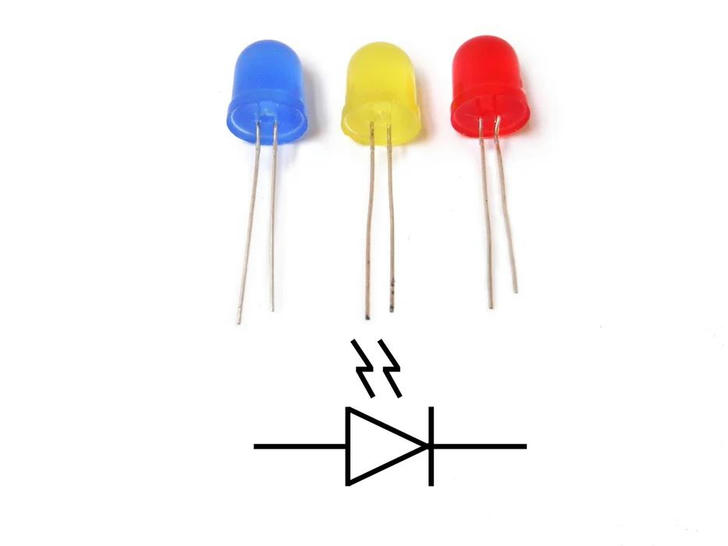Basic Electronics for Beginners in 20 Steps
Step 12: LEDs

LED stands for Light Emitting Diode. It’s a special type of diode that lights up when electricity flows through it. Like all diodes, LEDs are polarized, meaning electricity only flows through them in one direction.
You can easily identify the direction of electricity in an LED by two features: the positive lead (anode) is usually longer, and the negative lead (cathode) is shorter. Additionally, there’s often a flat notch on the side of the LED, indicating the anode. But keep in mind that not all LEDs have this notch, or the marking may sometimes be incorrect.
LEDs, like other diodes, cause a voltage drop in the circuit, but they typically don’t add much resistance. To prevent short circuits, you need to place a resistor in series with the LED. You can use an online LED calculator to determine the ideal resistor value. It’s often a good idea to use a resistor with a slightly higher value than what the calculator suggests.
Although you might be tempted to wire LEDs in series, keep in mind that each LED will cause a voltage drop. This means that, eventually, the power available may not be enough to keep the LEDs lit. To light multiple LEDs, it’s better to wire them in parallel, but make sure they all have the same power rating, as different colors often have different ratings.
In a schematic, an LED is represented as a diode symbol with lightning bolts coming off it to show that it's a glowing diode.
